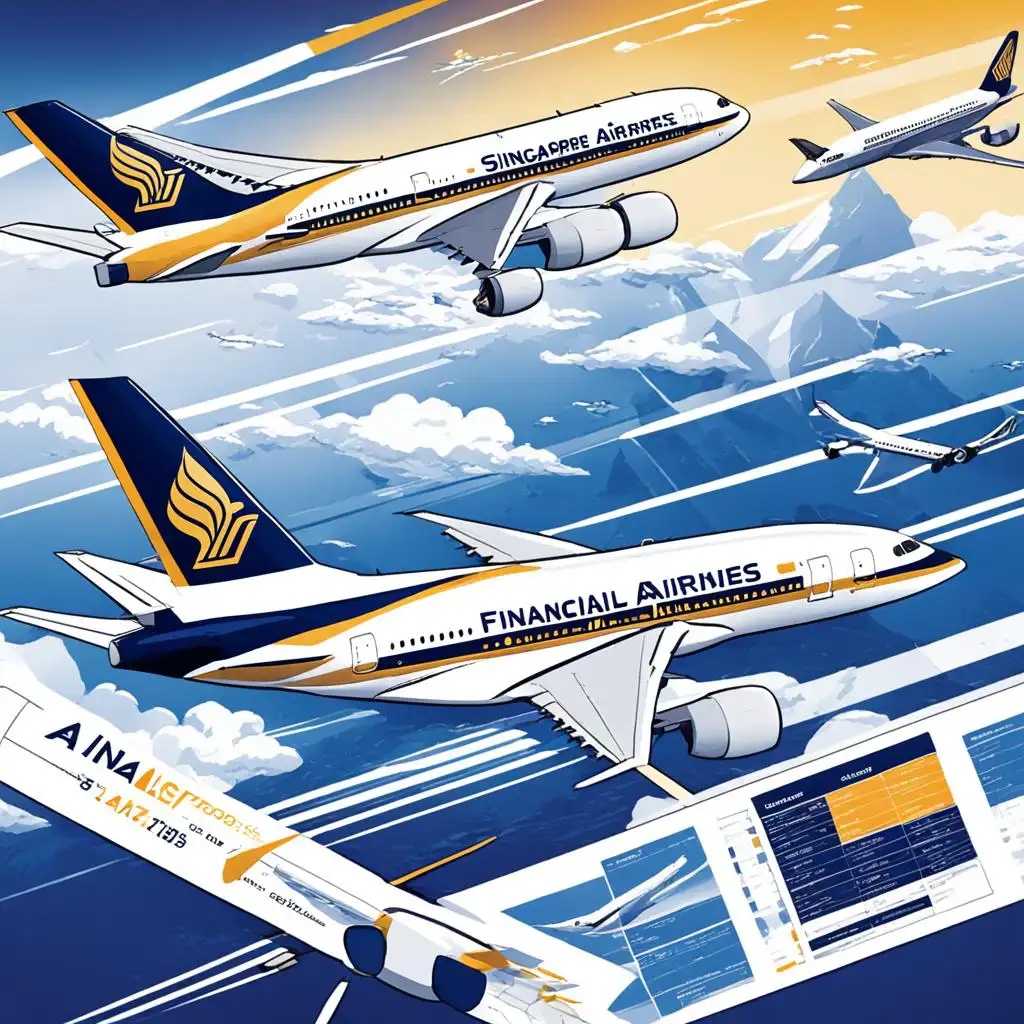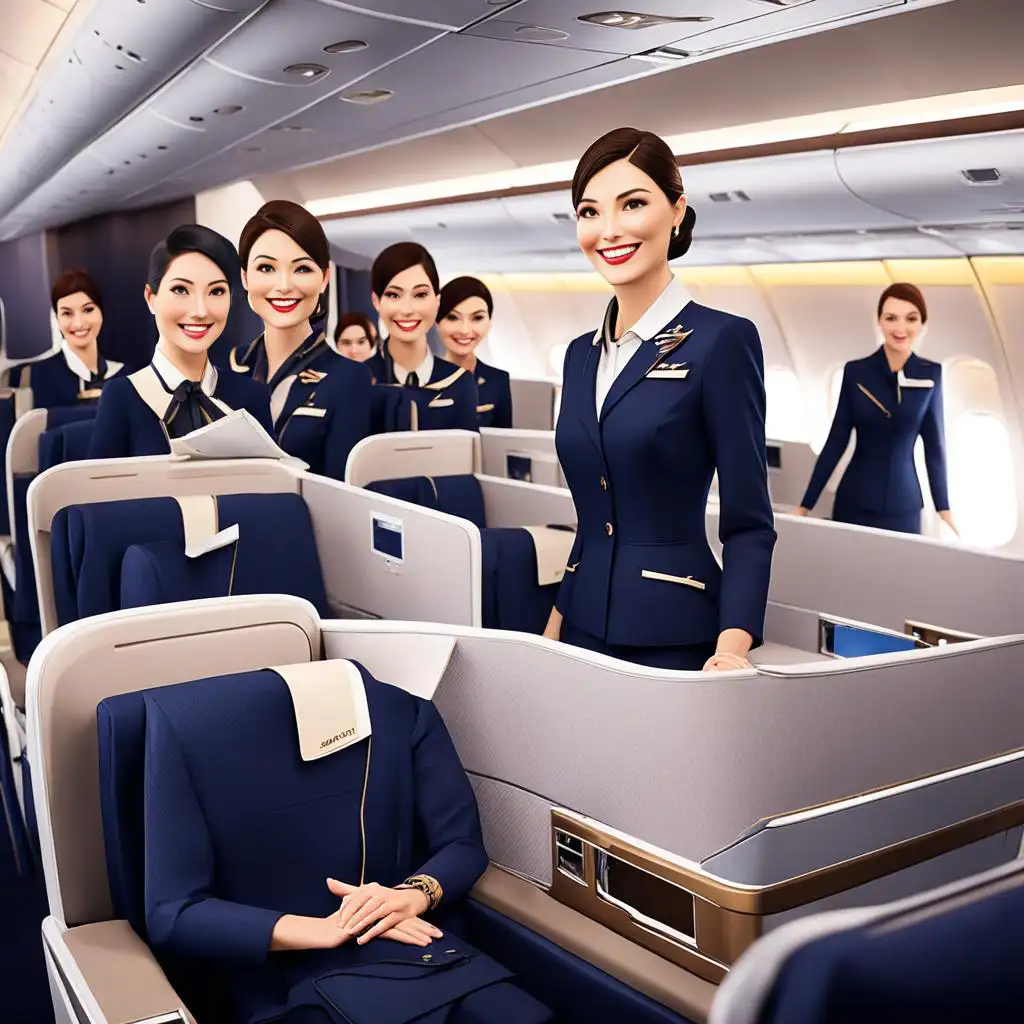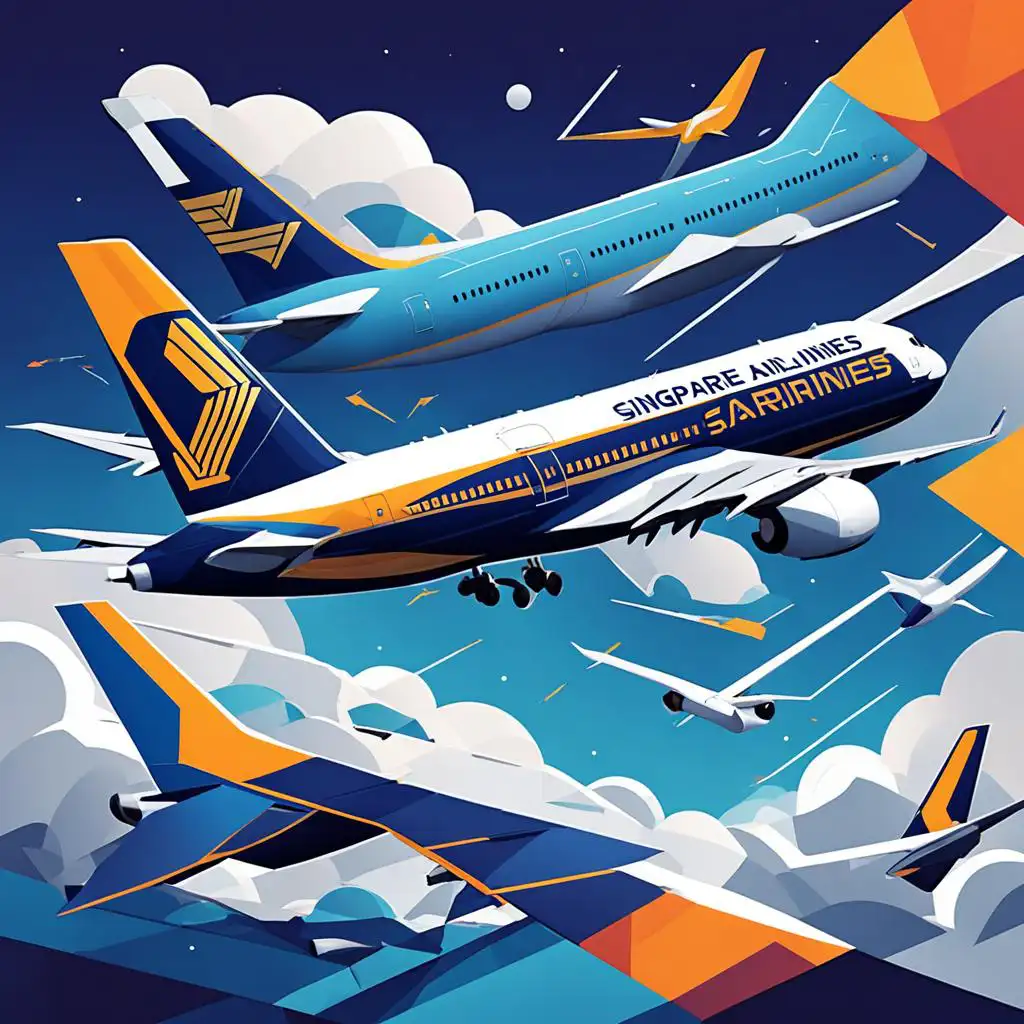If you’ve ever wondered about the inner workings of one of the world’s leading airlines, Singapore Airlines, you may be curious about the size of its workforce. Just how many employees does Singapore Airlines have to keep its operations running smoothly? Let’s delve into the numbers and explore the significance of the airline’s workforce.
Singapore Airlines’ Subsidiaries and Operations
Singapore Airlines Group operates with a diverse range of subsidiaries that play a crucial role in supporting its operations. These subsidiaries contribute to the overall success and growth of Singapore Airlines.
SIA Engineering Company
SIA Engineering Company, a prominent subsidiary of Singapore Airlines, is responsible for providing maintenance, repair, and overhaul (MRO) services across nine countries. Known for its expertise, SIA Engineering Company collaborates with renowned industry leaders such as Boeing and Rolls-Royce.
Scoot
Scoot serves as a wholly owned subsidiary of Singapore Airlines and operates as a low-cost carrier. By offering affordable air travel options, Scoot expands Singapore Airlines’ market reach, attracting a wider range of passengers.
Singapore Airlines Cargo
Singapore Airlines Cargo manages the freighter fleet and the cargo capacity in the passenger aircraft of Singapore Airlines. With its global network, the subsidiary provides reliable and efficient cargo transportation solutions, catering to the diverse needs of customers.
Singapore Flying College
Singapore Airlines also owns Singapore Flying College, an esteemed institution that provides comprehensive training for aspiring pilots and aviation professionals. With state-of-the-art facilities and experienced instructors, the college plays a vital role in nurturing talent within the aviation industry.
These subsidiaries, including SIA Engineering Company, Scoot, Singapore Airlines Cargo, and Singapore Flying College, form an integral part of Singapore Airlines’ operations, enabling the airline to maintain its position as a leader in the aviation industry.
| Subsidiary | Operation |
|---|---|
| SIA Engineering Company | Maintenance, repair, and overhaul (MRO) services |
| Scoot | Low-cost carrier |
| Singapore Airlines Cargo | Freighter fleet management and cargo capacity |
| Singapore Flying College | Pilot and aviation professional training |
These subsidiaries contribute to the overall success and growth of Singapore Airlines, enhancing its ability to provide exceptional services and maintain its position as a leading global airline.
Financial Performance of Singapore Airlines

When it comes to financial performance, Singapore Airlines has demonstrated its ability to excel in generating revenue and maintaining profitability. In the fiscal year from April 1, 2022, to March 31, 2023, the airline reported impressive financial results, solidifying its position as one of the leading airlines globally.
During this period, Singapore Airlines achieved a total revenue of S$17.77 billion. This substantial revenue reflects the airline’s ability to attract a significant customer base and generate income through various sources, such as passenger ticket sales, cargo services, and ancillary revenue streams.
Furthermore, the airline’s operating income stood at S$2.69 billion. Operating income represents the financial performance of the airline’s core operations, excluding non-operating revenues and expenses. This figure showcases Singapore Airlines’ ability to effectively manage its day-to-day operations and generate profit through its core business activities.
Singapore Airlines also reported a net income of S$2.16 billion during the fiscal year. Net income represents the final profit earned by the airline after deducting all expenses, including taxes and interest. This impressive net income underscores the airline’s financial strength and its ability to maintain profitability, even in a challenging economic environment.
In terms of its total assets, Singapore Airlines boasts a strong financial position, with total assets amounting to S$49.10 billion. Total assets encompass all the resources owned by the airline, including aircraft, real estate, investments, and cash reserves. This substantial asset base signifies the airline’s robust financial foundation and provides a solid platform for its operations and future growth.
Overall, Singapore Airlines’ financial performance highlights its ability to generate significant revenue, maintain profitability, and showcase a strong financial position. These achievements reinforce its position as one of the leading airlines globally, solidifying its reputation as a key player in the aviation industry.
| Financial Performance | Amount (in billions) |
|---|---|
| Total Revenue | S$17.77 |
| Operating Income | S$2.69 |
| Net Income | S$2.16 |
| Total Assets | S$49.10 |
Singapore Airlines’ Reputation and Rankings

Singapore Airlines has established a reputation for excellence in the airline industry. It has been ranked as the world’s best airline five times by Skytrax, a renowned air transport rating organization. The airline is known for its exceptional customer service experience, highlighted by its well-trained cabin crew, often referred to as the world’s best airline cabin crew. Singapore Airlines has also been recognized for its cleanliness and has won awards for being one of the world’s cleanest airlines. These accolades reflect the airline’s commitment to providing a premium travel experience for its passengers.
Image:
Ownership and Corporate Affairs of Singapore Airlines

Singapore Airlines, one of the leading airlines in the world, is majority-owned by Temasek Holdings, a Singapore government investment and holding company. As of March 2020, Temasek Holdings held an impressive 55% of the voting stock of Singapore Airlines. This ownership structure ensures a strong connection between the airline and the Singapore government.
The Singapore government, through the Ministry of Finance, also holds a golden share in Singapore Airlines. However, it emphasizes its non-involvement in the management of the company, allowing the airline to operate independently and make strategic decisions in its corporate affairs.
The airline’s headquarters, known as Airline House, is located at Changi Airport in Singapore. This iconic building was once a hangar but has now become a symbol of Singapore Airlines’ corporate image and commitment to excellence.
The corporate affairs of Singapore Airlines are overseen by Chairman Peter Seah Lim Huat and CEO Goh Choon Phong. Under their leadership, the airline has achieved remarkable success, maintaining its position as a global industry leader.
| Ownership | Corporate Affairs |
|---|---|
| Majority-owned by Temasek Holdings | Overseen by Chairman Peter Seah Lim Huat |
| Singapore government holds a golden share | Overseen by CEO Goh Choon Phong |
| Headquartered at Airline House, Changi Airport |
Singapore Airlines’ Network and Achievements
Singapore Airlines operates an extensive network of 159 destinations, connecting the world with its exceptional service and state-of-the-art aircraft. The airline’s fleet includes the iconic Airbus A380, the largest passenger aircraft in the world, which Singapore Airlines was the first to introduce into service. With its spacious cabins and luxurious amenities, the A380 offers passengers a truly memorable flying experience.
Renowned for its long-haul flights, Singapore Airlines operates the world’s longest commercial flight, spanning the distance between Singapore and New York. Passengers can indulge in unparalleled comfort and unmatched hospitality as they embark on this extraordinary journey. Additionally, the airline operates the ultra-long-range version of the Airbus A350-900, enabling non-stop flights on extended routes.
These achievements solidify Singapore Airlines’ position as a leader in the aviation industry. With its vast network, passengers can venture to diverse destinations worldwide, while enjoying the exceptional service and comfort that Singapore Airlines is renowned for. Whether you’re traveling for business or pleasure, Singapore Airlines offers a wide range of travel options, allowing you to reach your desired destination in style and luxury.
FAQ
Q: How many employees does Singapore Airlines have?
A: Singapore Airlines has a workforce of 14,803 employees as of 2023.
Q: What are Singapore Airlines’ subsidiaries and operations?
A: Singapore Airlines Group has more than 20 subsidiaries, including SIA Engineering Company, Scoot, Singapore Airlines Cargo, and Singapore Flying College. SIA Engineering Company provides maintenance, repair, and overhaul services. Scoot operates as a low-cost carrier, expanding the airline’s market reach. Singapore Airlines Cargo manages the freighter fleet and cargo capacity. Singapore Flying College offers pilot and aviation professional training.
Q: What is the financial performance of Singapore Airlines?
A: In the fiscal year of April 1, 2022, to March 31, 2023, Singapore Airlines reported a total revenue of S.77 billion, with an operating income of S.69 billion and a net income of S.16 billion. The airline has total assets worth S.10 billion.
Q: What is Singapore Airlines’ reputation and rankings in the industry?
A: Singapore Airlines has been ranked as the world’s best airline on five occasions by Skytrax. The airline is known for its exceptional customer service experience and has won awards for being one of the world’s cleanest airlines.
Q: Who owns Singapore Airlines and what are the corporate affairs?
A: Singapore Airlines is majority-owned by Temasek Holdings, a Singapore government investment and holding company. The airline is headed by its Chairman, Peter Seah Lim Huat, and its CEO, Goh Choon Phong.
Q: What is the network and achievements of Singapore Airlines?
A: Singapore Airlines operates an extensive network with 159 destinations served by its fleet of aircraft. The airline is known for its long-haul flights, including the world’s longest commercial flight between Singapore and New York. Singapore Airlines achieved notable milestones, such as being the first to put the iconic Airbus A380 into service and operating the ultra-long-range version of the Airbus A350-900 for non-stop flights on long-haul routes.
